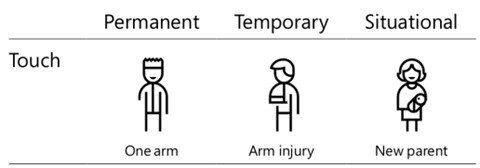Diversity of learners
The diversity present in any group of learners has profound potential to enrich and enhance learning experiences. The variety of perspectives, experiences and backgrounds represented amongst groups of learners can be drawn on to evoke and broaden idea generation and interactions fundamental and transferrable to real life experiences (e.g., the workplace).
Some of the factors that may contribute to the diversity of a group of learners include:
- Age
- Gender, sex and sexuality diverse
- Cultural background
- Religion
- Educational background
- Financial position
- Geographical location
- Disability
Another aspect of diversity is variability of learners. This refers to the variety of abilities and experiences that learners bring with them to a learning experience. This includes but is not limited to the unique interests, goals and learning preferences of learners.
It is important to consider diversity and the variability of learners when planning and implementing learning experiences and interactions. Some barriers may be present as learners interact with content and activities. Barriers describe “the result of an interaction between a person with an impairment and social, political and environmental impediments affecting their access and participation” (Graham, 2019). As illustrated in the image below, these barriers may be categorised as permanent, temporary, or situational.
Image: © Microsoft 2016 Licensed under Creative Commons Attribution, NonCommercial-NoDerivatives (CC BY-NC-ND)
These categories may be further explained with the following examples where strategies employed to support one learner may benefit several others.
| Permanent | Temporary | Situational |
| Learner who has deafness | Learner with an ear infection | Learner studying in a loud environment |
| Learner who has vision impairment (e.g., blindness) | Learner who has recently had eye surgery | Learner studying with glare on their computer screen |
Designing for inclusion
Designing content that is inclusive and accessible is a crucial step toward meeting the diverse needs of learners. Often, we target learning experiences at an ‘average’ learner but the notion that an average learner exists is considered to be a myth (Rose, 2015).
Inclusive design encourages educators to address significant potential barriers to create an optimal learning experience for all learners. For more information about inclusive design and its implementation, refer to the Inclusive design collection.
Related information
- The Myth of Average: Todd Rose at TEDxSonomaCounty | YouTube/TEDx
References
Graham, L. (Ed.). (2019). Inclusive education for the 21st century: Theory, policy and practice. Taylor & Francis Group.
Rose, T. (2015). The end of average: How we succeed in a world that values sameness. HarperOne/HarperCollins.



